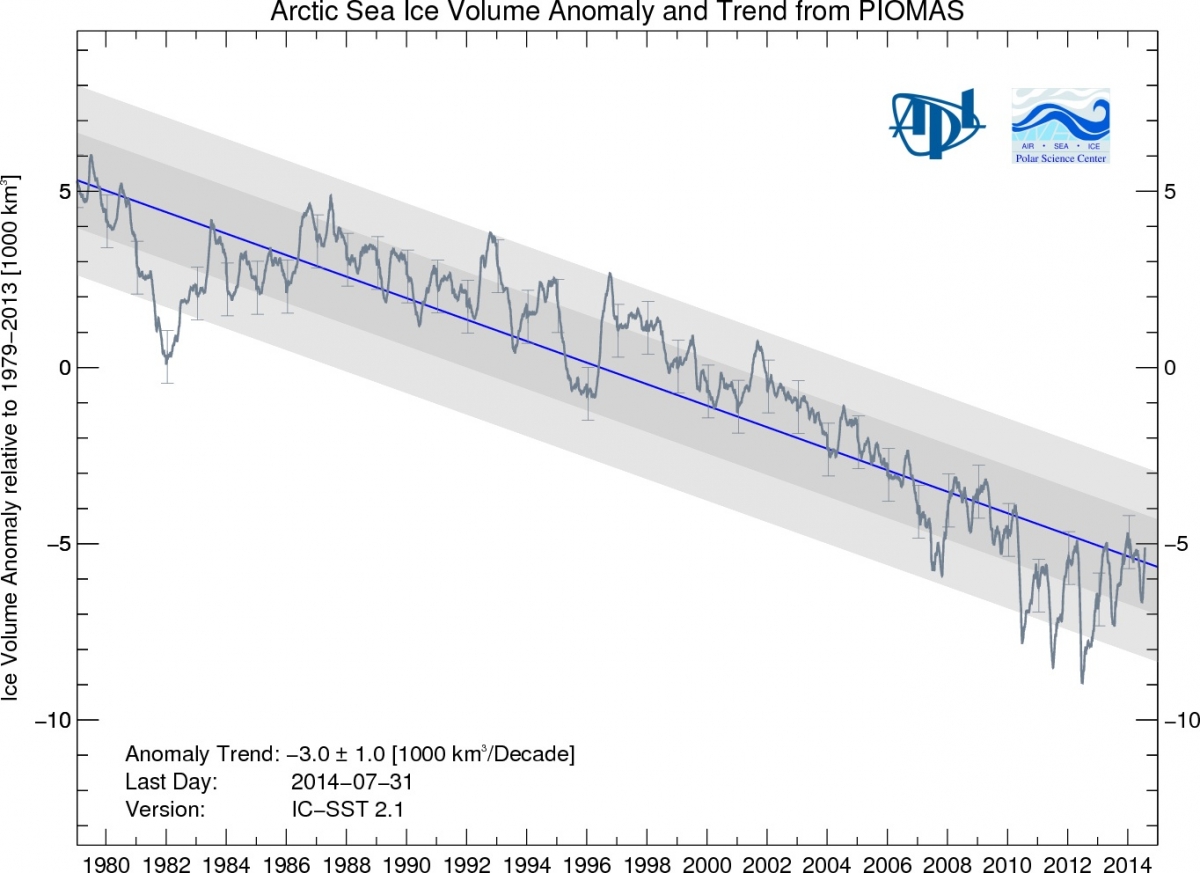Arctic Ice Melting Reversed? — or ‘junk journalism’

The sensationalist British paper, The Daily Mail ran this bold piece over the weekend, poking fun at Al Gore and making the case the disappearing polar ice cap had now reversed the trend and was growing in size.
Conveniently it fit their contrarian climate change agenda (…and likely will help their sales).
Using the two years they have selected it does APPEAR as if the Arctic ice sheet is having tremendous growth. Is it truth or distortion? Here are the facts to put their claims in context.
2012 was an extreme year for melting in the Arctic.
As shown on the graph below from the very reputable Polar Science Center at the Advanced Physics Lab at the University of Washington, the polar ice cap AS SHOWN IN TERMS OF THE ANNUAL “ICE MINIMUM”, has been on a steady pattern of decline for more than three decades.
The ICE MINIMUM is usually in September before it begins the annual expansion during the winter months. Therefore the first point of confusion is that if the low in one year with incredible melting is above the point in the previous year, it is not exactly the same thing as implying the ice sheet is expanding.
To put that in context, let’s consider a financial analogy. You lost ten thousand dollars on investments in one year and lost another five thousand the following year. In the 3rd year, you recover two thousand dollars. If your investment broker tried to tell you that you “made two thousand dollars” in the 3rd year, would that override the fifteen thousand dollars of prior loss?
 Looking at the trend of annual ice minimums, it is staying quite consistent within broad boundary channels, showing a steep decline. In years when there is extreme movement in either direction, the following year or two, often make small counter adjustments. (In scientific terms, that is called “reversion to the mean”)
Looking at the trend of annual ice minimums, it is staying quite consistent within broad boundary channels, showing a steep decline. In years when there is extreme movement in either direction, the following year or two, often make small counter adjustments. (In scientific terms, that is called “reversion to the mean”)
Since 2012 was such an extreme year for melting, it is very much in pattern for 2013 and 2014 to show less melting. As you can see on the graphic in the Daily Mail, they chose a small segment from 2004 – 2014, creating the impression that the line is just going up and down. Looking back at the APL PIOMAS graph going back to 1980 the larger trend is clear.
Again, using an investment metaphor, most people know that by carefully selecting the sample period, often termed “cherry picking” you can make any case you want. It is a selective choice of data to fit an agenda. The bigger picture is clearer.
Aside from the distortion by the Daily Mail, there are a couple of other aspects of sea ice in the Arctic that are worth understanding.
As the ocean continues to warm, there is increased evaporation. That moisture will come down as rain or snow depending on the temperature, which is why we are seeing record rain and snowfall in many places in recent years. In areas of existing ice such as the Polar ice cap, Greenland, and Antarctica, that extra snowfall can increase the ice pack. I know that can be very confusing and certainly counterintuitive. Three key points may help you sift your way through this:
- In the longer term, over the coming decades, the overall amount of ice on the planet will decline, adjusting to the fact the planet, and in particular the oceans, are 1.5 degrees F (0.85 C) warmer than they were a century ago. You will see a clearer picture if you look at decades or longer.
- The sea ice, such as depicted in this article in the Daily Mail, does not affect sea level, since it is floating ice. Like ice cubes melting in a glass, the level of liquid does not change, as the ice melts. Sea level rise occurs primarily from two other factors. a) the ice on land that melts and enters the ocean as meltwater or icebergs. (glaciers all over the world and the two large ice sheets on Greenland and Antarctica), and b) as the ocean warms, the water actually expands slightly, raising sea level, a phenomenon called “thermal expansion.”
- As I explain in High Tide On Main Street: Rising Sea Level and the Coming Coastal Crisis rising sea level is now past the “tipping point.” Even if we reduce or eventually stop producing greenhouse gases, mainly carbon dioxide, that will stop the temperature from increasing further, and eventually will decrease. Yet the extra heat already stored in the ocean will continue to cause sea level to rise decade after decade for the two reasons cited just above. As a result, we must begin adapting to rising sea level, and also do everything possible to reduce carbon emissions, to reduce the warming (often called mitigation), to keep the rate of sea level rise as low as possible.
If you found this helpful, please consider sharing.
